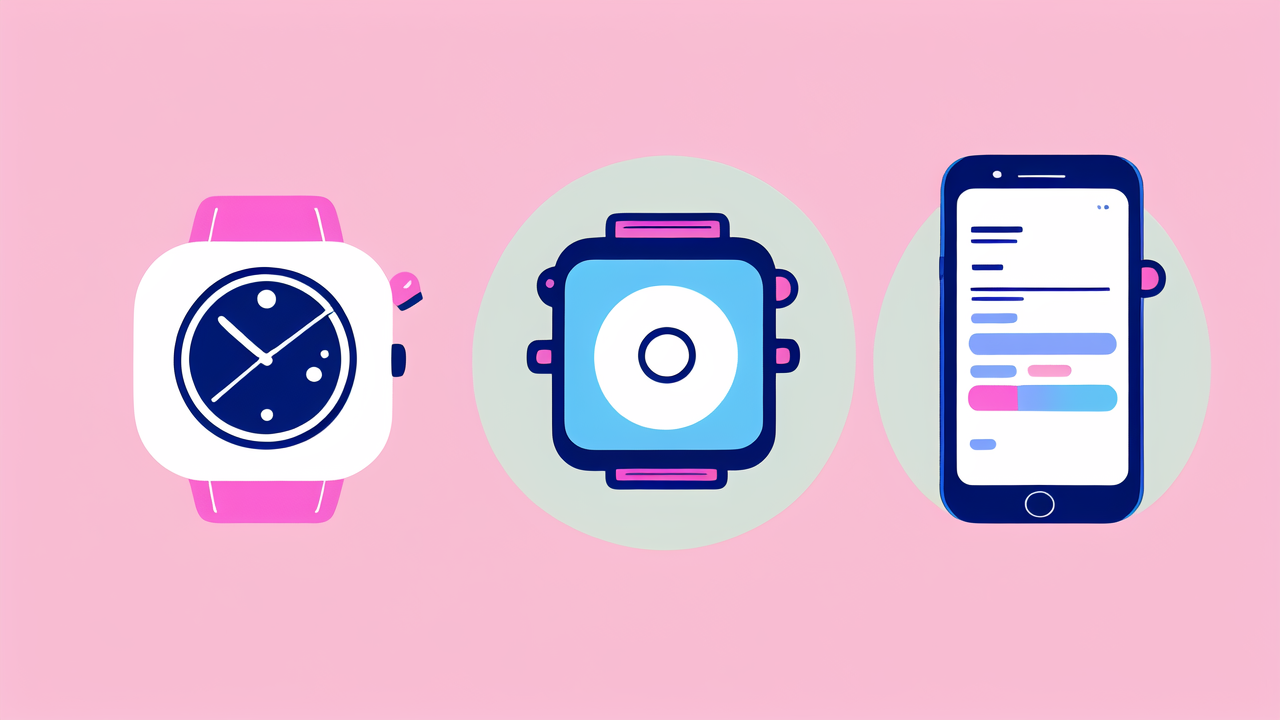Understanding Smart Watch Technology and Its Evolution
A Brief History of Smart Watches
Smart watches have come a long way since their beginnings. In the early 2000s, devices that could perform basic tasks like calculations and games appeared on wrists. However, it was not until 2013 that the term 'smart watch' gained widespread recognition with the launch of the Pebble, a watch that connected to smartphones and offered notifications on your wrist. The following year, big names like Samsung and Motorola entered the market with their own versions, but it was the Apple Watch in 2015 that truly pushed the boundaries of what a smart watch could be, making them a must-have accessory for tech enthusiasts. As the years progressed, smart watch technology evolved rapidly, integrating health and fitness tracking, mobile payments, and voice assistants, transforming them into versatile tools that cater to a wide array of user needs and preferences.

How Smart Watches Have Transformed Wearable Tech
Smart watches have revolutionized the concept of wearable technology. By merging the functionality of a smartphone with the convenience of a wristwatch, these devices have become a vital accessory for many. They offer real-time notifications, health and fitness tracking, and even mobile payment options all from the comfort of your wrist.
Increasingly, smart watches are now seen as an extension of oneself, acting as a personal assistant, fitness coach, and communication hub. They've brought about a change in how we interact with technology, pushing the boundaries of what 'wearable' means. From simply counting steps to monitoring heart rates and sleep patterns, smart watches provide a personalized tech experience like never before.
This transformation has also opened up new markets and driven innovation within the industry, as seen with the Apple Watch Series 9, noted for its comprehensive features that cater to a variety of user needs. As smart watch technology continues to evolve, the impact on both personal connectivity and the broader realm of wearable tech is undeniable.
Comparing Top Smart Watch Brands in the U.S.
Apple Smart Watches and Their Dominance
Apple's stronghold in the smart watch market is no secret, with their innovative designs and seamless integration with other Apple devices setting the benchmark for competitors. The iconic Apple Watch, first launched in 2015, has been gaining momentum with each iteration. Its intuitive interface, paired with cutting-edge health and fitness tracking capabilities, has made it a consumer favorite. Apple's dedication to privacy and security, along with features like the ECG monitor and fall detection, has further cemented its dominance. Additionally, Apple’s ecosystem encourages users to keep all their devices within the brand, heightening user loyalty. These aspects collectively contribute to Apple's leading position in the wearables market in the U.S., relentlessly pushing the boundaries of what smart watches can do.
Emerging Competitors to Apple in the Wearables Market
While Apple remains the leader in the U.S. wearable market, several emerging brands are competing fiercely. Samsung's Galaxy Watch series offers a seamless integration with Android devices and boasts its own health-tracking features. Google's recent acquisitions hint at a strong push in wearables with the Google Pixel Watch, blending style with Google's software ecosystem. Fitbit, now part of Google, continues to be popular for its fitness-focused devices. Garmin specializes in watches for athletes and outdoor enthusiasts, offering rugged designs and long battery life. These competitors are challenging Apple's dominance by focusing on niches like fitness, battery longevity, and integration with Android systems, meeting the diverse needs of the smartwatch consumer base.
Key Features to Consider When Choosing a Smart Watch
Health and Fitness Monitoring Capabilities
When looking for a smart watch, one of the most crucial features to consider is its health and fitness monitoring capabilities. Modern smart watches go far beyond merely tracking steps or counting calories. They now come equipped with advanced sensors that can monitor heart rate, blood oxygen levels, and sleep patterns. Some models offer built-in GPS for precise tracking of outdoor activities like running or cycling. For those focused on fitness, look for watches with a range of workout modes and the ability to sync with fitness apps. Additionally, consider whether the watch provides motivational features, such as setting exercise goals or reminders to move. These features allow users to gain a comprehensive view of their wellness and better manage their health regimes.
Communication and Connectivity Options
When selecting a smart watch, communication and connectivity are vital aspects to consider. They determine how seamlessly the device can sync with your smartphone, make calls, send texts, and access the internet. Look for options with strong Bluetooth capabilities and compatibility with your mobile operating system - whether it's Android or iOS. Moreover, consider smart watches that support Wi-Fi and LTE for independent connection without a phone nearby. NFC support for contactless payments can be highly convenient, and GPS is essential for accurate location tracking. The ability to receive notifications directly on your watch is also a key feature, allowing you to stay informed without constantly checking your phone.
Safety and Emergency Features
When selecting a smart watch, scrutinizing its safety and emergency capabilities is vital. Modern devices often incorporate features such as fall detection, which can alert emergency services if the wearer takes a hard fall. Additionally, SOS alerts can be programmed to send your location and distress message to a predefined contact list. Some smart watches also monitor heart rate irregularities, potentially catching early signs of serious health issues. Look for a watch with built-in GPS tracking for added safety during outdoor activities, ensuring you're always reachable even if your phone isn't on hand. These features not only offer peace of mind but also highlight the incredible advancements in wearable technology, making them indispensable for both the elderly and active individuals alike.
Analyzing the Apple Watch Series 9
Design and Hardware Improvements
The Apple Watch Series 9 marks another leap in design and hardware excellence. Its refined chassis boasts a larger, always-on Retina display, offering more detail and brighter visuals than its predecessors. Durability is top-notch with its crack-resistant crystal and water-resistant build, suitable for all adventures. Inside, the device is powered by an advanced S7 chip, promising faster performance that handles apps and tasks with seamless agility. Battery life has also seen an enhancement, ensuring users stay connected longer without constant recharging. This iteration represents Apple's commitment to pushing the boundaries of what a smartwatch can be, blending form and function into a wearable that's both stylish and powerful.
Enhanced Communication Features in the Latest Model
The latest Apple Watch Series 9 boasts significant improvements in its communication capabilities. The enhanced features are designed to keep users better connected than ever before. Users can now enjoy an expanded range of options, including quicker access to messages, more responsive voice-to-text functionality, and a robust set of call handling features. Additionally, the Series 9 integrates seamlessly with the iPhone, enabling users to easily manage texts and phone calls directly from their wrist. Apple has also introduced new watch faces that allow for more at-a-glance information pertinent to communication, such as calendar events and contacts. With these advances, the Series 9 sets a new standard for smart watch communication efficiency and intuitiveness.
Fitness and Health Tracking Innovations
The Apple Watch Series 9 marks yet another leap forward in the realm of fitness and health tracking. Building upon the rich legacy of its predecessors, this latest model introduces cutting-edge innovations designed to support an active and health-conscious lifestyle. For fitness enthusiasts, the Series 9 offers enhanced workout tracking capabilities, with more precise measurements for a variety of exercises and activities. This ensures that users get accurate data on their performance and progress. In terms of health, the new model also includes advanced sensors that can monitor heart rate, blood oxygen levels, and even stress, providing a comprehensive overview of one's well-being. Moreover, sleep tracking has been refined, giving wearers insights into their sleep patterns and quality. These innovations exemplify the commitment of Apple to not only keep pace but set new standards in the wearable technology market, particularly in the areas of health and wellness.
Matching Smart Watches with Lifestyle Needs
Best Smart Watches for Fitness Enthusiasts
For fitness devotees, a smart watch is more than just a timekeeping gadget; it's a personal trainer on your wrist. When choosing the best fitness smart watch, there are several standout features to look for. Heart rate monitoring, GPS capabilities, water resistance, and workout tracking are essential. Watches like the Apple Watch Series 9 excel in these areas, offering a comprehensive suite of fitness tools that cater to runners, swimmers, cyclists, and gym enthusiasts. Models from Fitbit and Garmin are also worth considering, particularly for their specialized fitness algorithms and long-lasting battery life designed for endurance athletes. The right fitness smart watch not only tracks your activity but also provides insights into your performance, recovery, and overall health, helping you reach your fitness goals.
Smart Watches for Everyday Connectivity and Productivity
In today's fast-paced world, smart watches have become an indispensable tool to keep us connected and productive throughout the day. For those who rely heavily on their devices for daily tasks, selecting a smart watch tailored to these needs is essential. The ideal models offer streamlined notifications, allowing users to receive emails, texts, and app alerts directly on their wrists. They support voice commands and quick replies, which enable multitasking without taking the phone out of your pocket. Calendar synchronization is another vital feature, keeping track of meetings and appointments with ease. Smart watches with contactless payment options, like Apple Pay or Google Wallet, transform the way we shop, providing a swift and secure method to handle transactions. Access to virtual assistants, such as Siri or Google Assistant, furthers the convenience by setting reminders and controlling smart home devices hands-free. When evaluating smart watches for everyday connectivity and productivity, ensure these cutting-edge communication features are at the forefront to make the most out of your wearable experience.
Specialized Smart Watches for Health Monitoring
When selecting a smart watch with a focus on health monitoring, looking for specialized devices can be key. These specialized smart watches offer advanced health-tracking features tailored for individuals who prioritize their well-being. Features like heart rate monitoring, blood pressure measurement, and sleep analysis cater to those with specific health concerns or goals. Furthermore, some models also provide stress tracking, blood oxygen saturation (SpO2) monitoring, and even electrocardiogram (ECG) functions. Brands like Fitbit and Garmin offer smart watches with robust health monitoring tools that can sync with mobile apps for a comprehensive view of your health over time. It's important to consider the compatibility of these watches with your smartphone, as well as their ability to share data with your healthcare provider for a holistic health management approach.
User Experience: Navigating the Interface and Apps
The Importance of User-Friendly Design
A user-friendly design is a crucial aspect of any smart watch. It ensures that users can effortlessly navigate the interface and access apps without confusion. Simplicity is key, as users should be able to quickly glance at their device and understand the next steps. It's about minimizing the time needed to learn and adapt to the smart watch environment, promoting a better user experience. This reflects in features such as intuitive touch controls, easily readable displays, and straightforward menu layouts. With a well-designed user interface, users can enjoy seamless interaction with their smart watch, allowing for efficient management of daily tasks, health tracking, and communication. Hence, smart watches with user-friendly designs lead to higher satisfaction by enabling users to exploit the full potential of their wearable tech.
Customizing Your Smart Watch for Optimal Use
Finding your way through a smart watch's plethora of features can seem daunting at first. However, customizing your smart watch is key to enhancing its utility and ensuring it seamlessly fits into your daily routine. Begin by prioritizing the apps and notifications that are most important to you. For instance, if staying updated on work emails is your top priority, set your watch to alert you whenever a new message arrives. Fitness buffs may prefer quick access to their workout stats and health data. You can often personalize smart watch faces with the information you need at a glance, like next meeting times or weather forecasts. Additionally, adjusting vibration strength and sound notifications can keep you alert without becoming a nuisance. By taking the time to tailor your smart watch settings, you transform it from a tech gadget into a personal assistant that truly caters to your lifestyle.
Future Trends in Smart Watch Technology
Predictions on Upcoming Innovations
As we peer into the horizon of smart watch technology, several predictions stand out for upcoming innovations. Firstly, battery life is likely to see significant improvements, catering to the always-on lifestyle of users who demand longevity from their devices. We might also anticipate the integration of flexible displays that wrap around wrists, offering a larger screen in a compact form. Another exciting prospect is the advancement of on-wrist biometric technology, which could go beyond heart rate monitoring to include blood sugar levels or hydration status for holistic health management. Enhanced AI capabilities may provide personalized insights and suggestions, learning from user behavior to offer contextual assistance. Lastly, smart watches could evolve into standalone communication hubs, minimizing reliance on smartphones and introducing new ways to interact, like gesture recognition or voice commands for hands-free convenience. These glimpses into the future paint a picture of a smart watch landscape brimming with potential and poised to redefine wearable tech once again.
The Role of AI and Machine Learning in Wearables
The role of AI and machine learning in wearables, especially smart watches, is set to transform how we interact with technology on a daily basis. AI algorithms can learn our habits, personalize notifications, and even predict our needs. For instance, some smart watches may soon be able to suggest the best time for a workout, based on our historical activity data and current stress levels. Machine learning could also enhance speech recognition for voice commands, making interaction more seamless. Additionally, AI might provide more accurate health monitoring by detecting anomalies in our vitals that could indicate underlying conditions. As these technologies evolve, we can expect our wearables to become more like personal assistants that help manage our lives efficiently.
Smart Watch Accessories and Complementary Products
Must-Have Accessories for Your Smart Watch
To truly enhance your smart watch experience, the right accessories are key. A must-have is a durable screen protector to prevent scratches and cracks. Another essential is a comfortable, sweat-resistant band, especially for those active days or workouts. Don't forget extra charging cables and a portable power bank to keep your device powered up on-the-go. A protective case is also worthwhile, particularly for outdoor activities where your watch may be exposed to the elements. Lastly, consider a stylish watch stand for convenient charging and display at home or in the office.
Integrating Smart Watches with Other Smart Devices
Making your smart watch work seamlessly with other smart devices can transform your daily routine. Start by syncing your smart watch to your smartphone to receive notifications, manage calls, and even control music or podcasts directly from your wrist. Consider compatibility with smart home devices; imagine adjusting your thermostat or lights by a quick tap on your watch. For those into fitness, connecting a smart watch to exercise equipment can enhance workouts with real-time data tracking. No more reaching for multiple gadgets; your smart watch becomes the central hub, effortlessly coordinating your tech-connected life.




Leave a comment
This site is protected by hCaptcha and the hCaptcha Privacy Policy and Terms of Service apply.